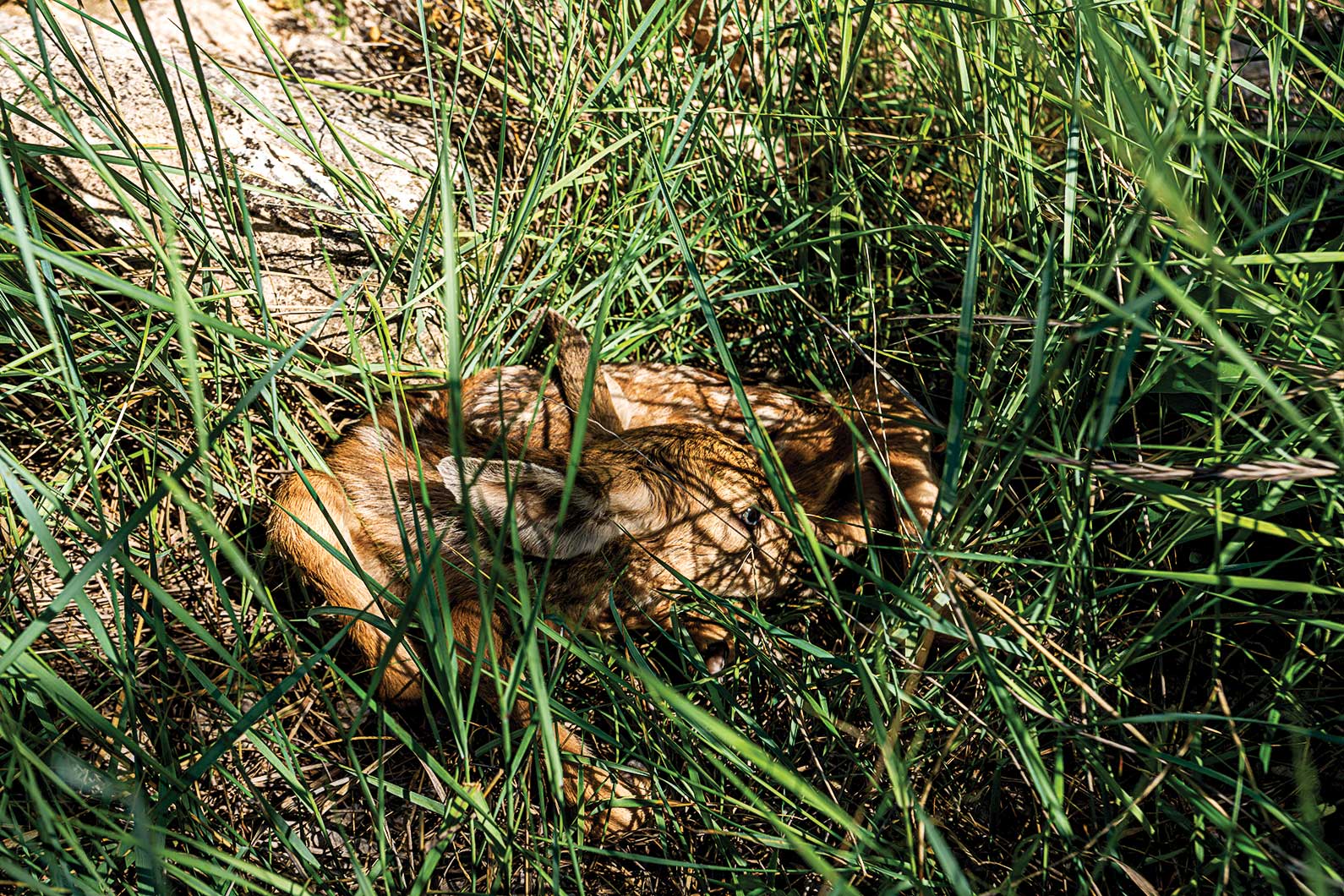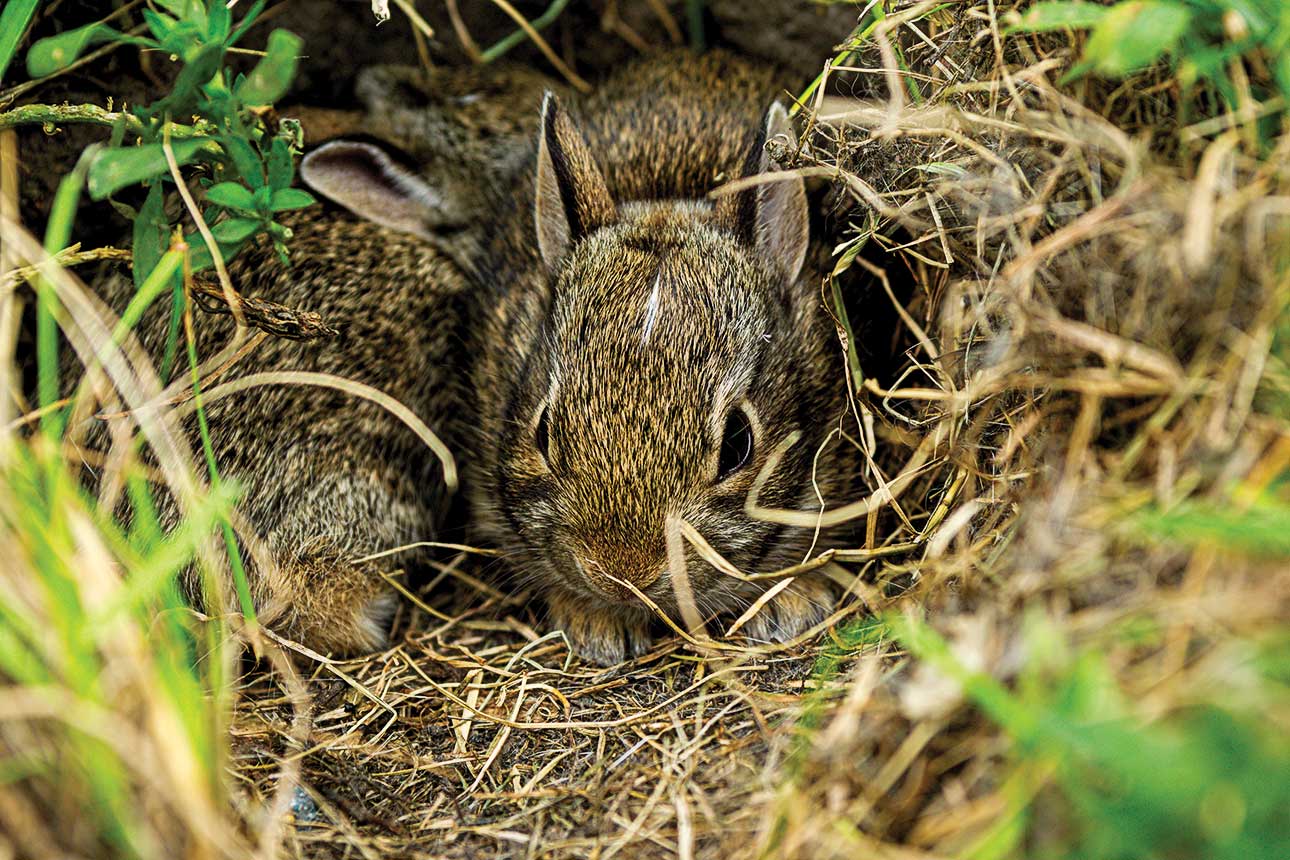When spotting a baby animal by itself, the best thing to do is to leave it alone.
Enlarge

Photo by Jeff Kurrus
By Julie Geiser
This time of year, people may find wild baby animals including deer, birds and rabbits. When spotting a baby animal by itself, it is natural to want to rescue it. The best thing to do, however, is to leave it alone. In most cases, the parent is nearby and is keeping its young safe through camouflage.
Deer
Does will leave their fawns for hours at a time, returning only to nurse them. The doe can be seen by predators, so she leaves the fawn hidden in tall grass, brush or behind large rocks or trees to draw attention away from its location. During their first weeks of life, fawns do not try to flee from predators; they rely on remaining undetected through camouflage and stillness and are learning critical survival skills during this time. People sometimes pick up these fawns, thinking they have been abandoned. The longer the fawn is separated from its mother, the slimmer the chance that it will be reunited with her, and its survival decreases.

Birds
If a bird nest gets blown out of a tree, people can help by putting the nest and eggs or baby birds back up in a tree where it is safe to reach. If young, non-feathered birds are blown out of a nest, simply put them back in the nest if you can safely reach it. Birds will not abandon their young if people touch them.
If you find baby birds on the ground that have very few feathers on them and you cannot reach the nest, make a nest from a small butter or sour cream tub. Punch holes in the tub to thread a thin rope through it, and then tie it as high as you can to a tree. Place some soft tissue and the baby bird(s) in the tub, and the parent birds will come back to take care of their young.
If you find baby birds that have a lot of feathers on the ground, the young birds will be tended to by their parents. At this stage, the fledged or feathered young birds are taught vital life skills like finding food, identifying predators and flying.
Rabbits
A mother cottontail rabbit will only tend to her nest a couple of times a day for a few minutes and spends the rest of the day away from it. She does this to prevent drawing predators to the nest and to forage for herself. If you find a nest that looks undisturbed and the mother is nowhere in sight, that is her plan. Once the young rabbits are old enough to leave the nest, they will scatter about the area and find places to feed and hide from danger.
Most wildlife is protected by state or federal law, and it is illegal to possess them. There are places that can help in emergencies — the Nebraska Wildlife Rehab, Inc., Raptor Recovery and the Nebraska Game and Parks Commission are good resources.

The post Leave Wild Babies Alone appeared first on Nebraskaland Magazine.
















